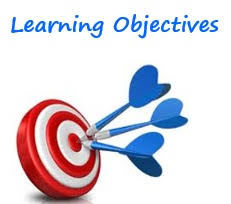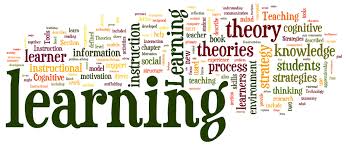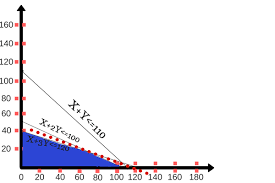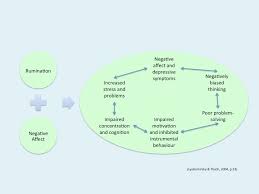
Self esteem in child development Case study
Order Instructions:
attached file
SAMPLE ANSWER
Self esteem in child development: Case study
Kate is 21 years old with very poor self-esteem and self-image. She dissents how she looks which discourages her for seeking employment. Kate’s parents are concerned about their child’s feelings and subsequent unemployment. Kate is my distant cousin. She is the second born in a family of three. She is from a privileged background, and has schooled in the best schools around the neighborhood. According to the interview conducted with her parents, Kate has struggled with her body weight. For instance, in primary school, the children used to call her ‘fatty’. Most of these children avoided playing with her, and had no friends when growing up. This taunting task continued through the high school, which made it more difficult for her to make friends and thus has made her remain excluded from social events due to low self-esteem.
Much has been reported about self-esteem and ways it affects a child’s development process. Self-esteem refers to personal’s self-image and understandings of how she or he is important in this world. During child development questions such as do people care about me? Do family members love me? Do teachers like or respect my ideas? What abilities do I have superior to others? If these questions have positive responses, the child develops positive image, which further increases the children security, trusts, and sense of self worth. This in turn improves the child’s sense of belonging and self-worth (Suzuki and Tomoda, 2015).
According to Thomson (2012), self-esteem is very important factor during child development because it shapes the child’s life. Psychology scholars associate children with high self-esteem with productive life. This is because these children grew up knowing that they are loved the way they are, and less likely to tear down a person or dominate others or view others are lesser beings. Self-esteem is shapes from home; it is more of family affair. The families are the first people that the child gets to relate with from the day they were born, parents and the siblings are powerful instruments in shaping a person’s self-esteem (Davis et al., 2012).
Child self-esteem is determined by the degree of praise of condemnation voices carried within them as they grow. This is best exemplified by the Kate’s case study. Despite of the increase support from Kate’s mother, she would face put-downs even at her home. She would face comments such as “why are you eating this, it will only make you fatter?”, “why won’t you exercise?” Her siblings did not want to be associated with at school, and would not walk with her, as they felt embarrassed. Research indicates that such negative responses from the home environment makes a child develop low self-esteem as well as self-image. Responses such as name-calling (like fatty), lack of appropriate guideline on how a child should do to get a task accomplished only makes a child feel rejected. Other responses such as threats, disinterests, overgeneralizations and violent disciplinary actions also affects child’s self esteem negatively (Liu, Wu and Ming, 2015).
Schooling also influences a child self esteem. Research indicates that preschool, kindergarten as well as grade schools plays great role in developing child’s self-esteem and self-competence. If a child feels competent by the time they are of age 7, they will have a relatively high esteem by the age of 12. As old adage puts it, success breeds success as it makes the children feel better about their abilities. The structure of the classroom and school culture influences a child’s self-esteem. This depends on whether he school instills competition versus cooperation, or diversity versus comparison. The teachers are trained that there are various approaches to correct the child’s understanding; each approach could profoundly affect the child’s esteem. The numerous teasing and bullying at the school and lack of teachers interventions made Kate believe that she is not important (Lee, Kim, Park, and Alcazar-Bejerano, 2015).
According to Morrill, friends and peer group have high influence on a child’s self-esteem during development. Acceptance among the peers improves the child’s confidence and goes ahead to improve the child sense of competence. Rejection from peers and classmates has made huge impact on Kate’s self worth. According to her mother, few months back, Kate had begun to turn around, and had even gotten a boyfriend. She had begun to practice healthy lifestyles including exercises and had lost about 8 kilograms. However, the relationship did not head the right directions and it ended. This has really crushed her spirits. She blames herself for the separation because she believes that her weight was one of the factors for the separation (Morrill, 2014).
This has her daily activities and she does not want to continue with her studies or look for a job. She thinks that her weight is the barrier towards being hired. Her few friends have stopped calling her due to her negativity and critics. She currently stays home the whole day. Her mother says that each time she looks into the mirror, she only points out how ugly she looks. From the interview analysis, it is evident that Kate’s low self-esteem was established early in life. However, it is time for Kate to understand that she is no longer a child and have to take charge of her life. This is supported by behaviorist theory proposes that child’s experiences during development shape the child’s life. This theory suggests that an infant’s minds are blank at birth and are gradually shaped by the environment either through positive or negative reinforcements. This theory encourages positive reinforcement’s approaches to develop a child’s development to the desirable direction (Thomson, 2012).
According to Erikson’s theory of child development, external factors, family, and the society influence child development processes. These factors influence a person’s personality and character. This is also supported by Arnold Gesell maturations theory, which states that as children develop, their true personalities and temperament are revealed with the help of the environment. According to research, 10-20% of children and adolescents suffer from psychological issues, lowering their self-esteem. One of the issues that contribute to low self-esteem is childhood obesity (Thomaes et al., 2010). However, very few researches have been conducted to evaluate the emotional effects of obesity on the obese children. One research study indicated that the emotional toll of obesity in children includes social stigma, bullying, and depression, all, which lowers person’s self-esteem even in adulthood (Davis et al., 2012).
Conclusion
Obesity is associated with low self-esteem at children at age of 14. The obese children should be give support and enrolled in weight control programs to help them focus on feeding on healthy foods and remaining physically active. To improve their self-esteem, they should be encouraged and supported. They should be complemented and corrected in a positive way. The best way to improve a child self esteem is showing love and trust to them.
References
Davis, E., Priest, N., Davies, B., Smyth, L., Waters, E., & Herrman, H. et al. (2012). Family day care educators: an exploration of their understanding and experiences promoting children’s social and emotional wellbeing. Early Child Development And Care, 182(9), 1193-1208. http://dx.doi.org/10.1080/03004430.2011.603420
Lee, K., Kim, M., Park, T., & Alcazar-Bejerano, I. (2015). Effects of a Ubiquitous Mentoring Program on Self-Esteem, School Adaptation, and Perceived Parental Attitude. Social Behavior And Personality: An International Journal, 43(7), 1193-1208. http://dx.doi.org/10.2224/sbp.2015.43.7.1193
Liu, M., Wu, L., & Ming, Q. (2015). How Does Physical Activity Intervention Improve Self-Esteem and Self-Concept in Children and Adolescents? Evidence from a Meta-Analysis. PLOS ONE, 10(8), e0134804. http://dx.doi.org/10.1371/journal.pone.0134804
Morrill, M. (2014). Sibling Sexual Abuse: An Exploratory Study of Long-term Consequences for Self-esteem and Counseling Considerations. J Fam Viol, 29(2), 205-213. http://dx.doi.org/10.1007/s10896-013-9571-4
Suzuki, H., & Tomoda, A. (2015). Roles of attachment and self-esteem: impact of early life stress on depressive symptoms among Japanese institutionalized children. BMC Psychiatry, 15(1), 8. http://dx.doi.org/10.1186/s12888-015-0385-1
Thomaes, S., Reijntjes, A., Orobio de Castro, B., Bushman, B., Poorthuis, A., & Telch, M. (2010). I Like Me If You Like Me: On the Interpersonal Modulation and Regulation of Preadolescents’ State Self-Esteem. Child Development, 81(3), 811-825. http://dx.doi.org/10.1111/j.1467-8624.2010.01435.x
Thomson, M. (2012). Labelling and self-esteem: does labelling exceptional students impact their self-esteem?. Support For Learning, 27(4), 158-165. http://dx.doi.org/10.1111/1467-9604.12004
We can write this or a similar paper for you! Simply fill the order form!












